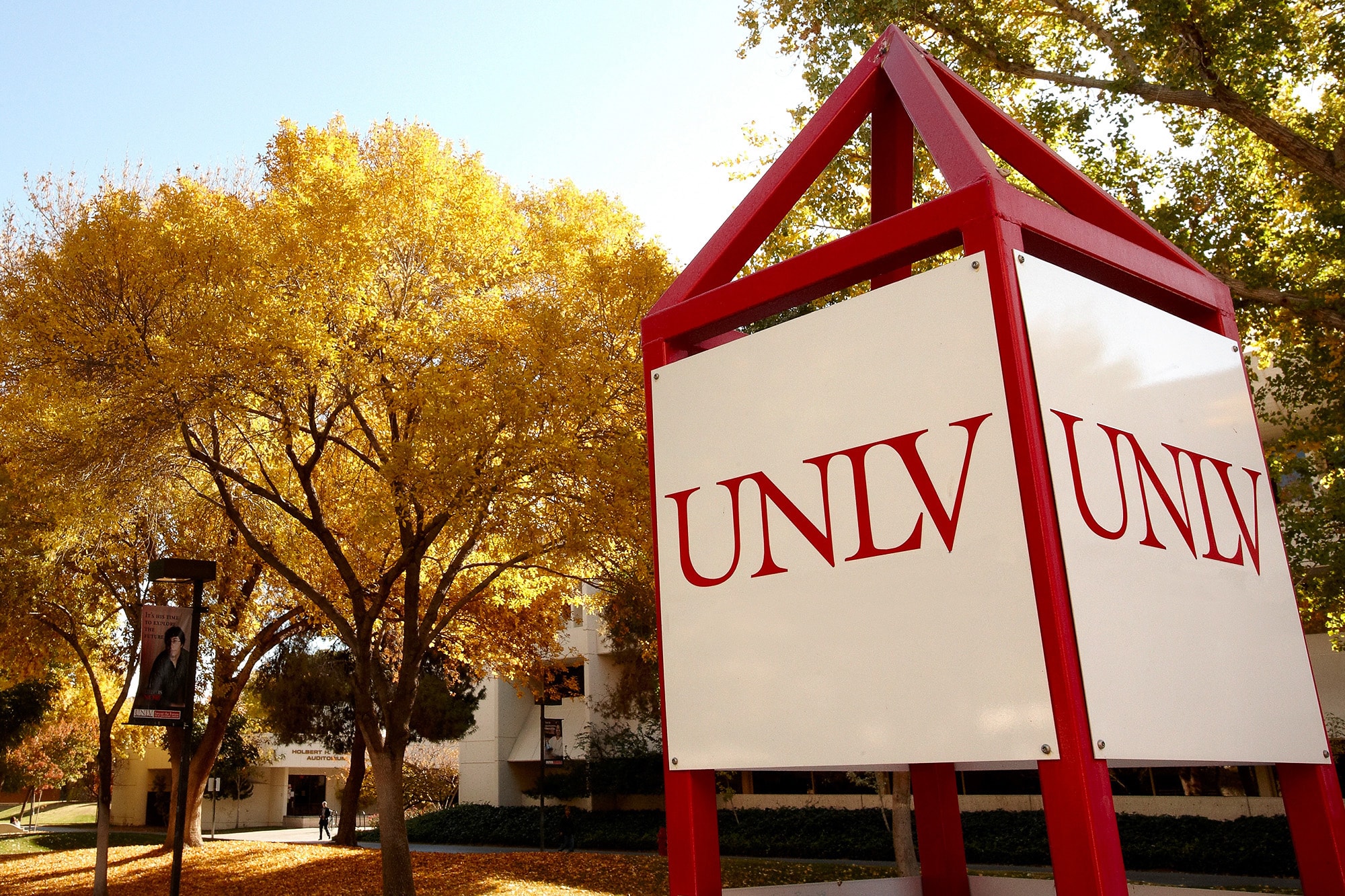UNLV is now part of the High Pressure Collaborative Access Team (HP-CAT) that is studying how materials react and change under high pressure and at varying temperatures. HP-CAT is made up of researchers from UNLV's High Pressure Science and Engineering Center, the Carnegie Institution's Geophysical Laboratory, and the High-Pressure Physics Group of the Lawrence Livermore National Laboratory.
The newest research facility available to the team is the Advanced Photon Source (APS) at Argonne National Laboratory in Illinois. Support for this project comes from the UNLV Foundation, the U.S. Department of Energy, the U.S. Department of Defense, the National Science Foundation, the W. M. Keck Foundation, the G. Unger Vetlesen Foundation, the Richard W. Higgins Foundation, and the University of Hawaii.
"This facility will greatly expand UNLV's capability for high-pressure research," said physics professor Malcolm Nicol, executive director of the university's High Pressure Science and Engineering Center. "We are very proud to have a UNLV presence at this world-class facility, and we expect to make major contributions to improving our understanding of the nature of high-pressure science."
Team Director David Mao predicts that the new high-pressure facility at the Advanced Photon Source "will unleash the full potential of high-pressure methods for materials research, including the quest for novel superconductors and superhard materials, the search for scientific knowledge of nuclear stockpile and energetic materials, the exploration of new physical properties inside highly compressed, hot planetary interiors, and the tests of hypotheses of high-pressure origins of life."
The Advanced Photon Source, which produces the nation's most brilliant X-ray beams for research, is funded by the Department of Energy's Office of Basic Energy Sciences. Researchers from around the world use the Advanced Photon Source for all types of research that require extraordinarily bright light -- from biology and geology to fundamental physics and chemistry.
Composed of researchers from academia, industry, and research laboratories, collaborative access teams design and build their own specialized instrumentation for specific uses. These instruments are used by members of the team and by unaffiliated experimenters whose research can benefit from the team's instrumentation and from APS X-ray beams.
The new HP-CAT research facility will advance high-pressure science by allowing new types of experiments to be performed, including complete crystallographic studies of materials at multimegabar pressures; measurements of the dynamics of electrons, atoms, and nuclei; and detailed studies of complex materials as functions of pressure, temperature, and time.
For more information, contact Malcolm Nicol at 895-1725.
The nation's first national laboratory, Argonne National Laboratory conducts basic and applied scientific research across a wide spectrum of disciplines, ranging from high-energy physics to climatology and biotechnology. Since 1990, Argonne has worked with more than 600 companies and numerous federal agencies and other organizations to help advance America's scientific leadership and prepare the nation for the future. The University of Chicago operates Argonne as part of the Department of Energy's national laboratory system.
Andrew Carnegie founded the Carnegie Institution of Washington in 1902. Today, the institution operates six research centers: the Geophysical Laboratory and the Department of Terrestrial Magnetism, both in Washington, D.C.; the Department of Embryology in Baltimore; the Department of Plant Biology and the Department of Global Ecology in Stanford, Calif.; and the Carnegie Observatories, based in Pasadena, Calif., with its principal observing location at the institution's Las Campanas Observatory, Chile. For more information about the Carnegie Institution, see the Web site www.CarnegieInstitution.org
Lawrence Livermore National Laboratory was established in 1952 to meet an urgent national security need by advancing nuclear weapons science and technology. Fifty years later, the Laboratory's primary mission is still national security and addresses stockpile stewardship, nonproliferation, and counter terrorism issues to reduce threats and dangers to the nation. In addition to meeting these security needs, the laboratory is world-renowned for its research and development in energy and environmental science, computational science, physics, engineering, and biotechnology. The laboratory is managed by the University of California for the Department of Energy's National Nuclear Security Administration.



